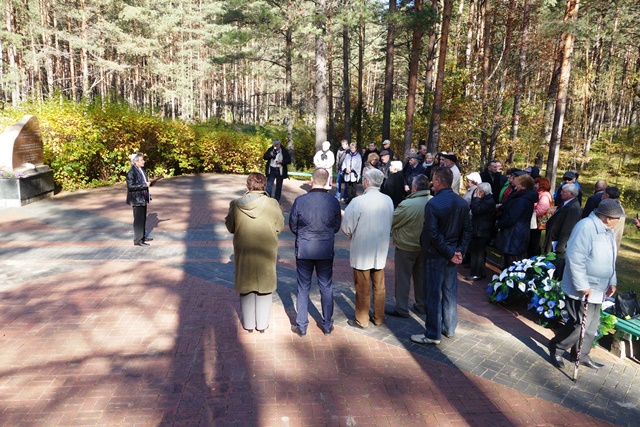Defending History Staff
Svintsyán [Švenčionys] — Some fifty people gathered in the forest at midday today at the mass grave at Poligón, outside Švenčioneliai (Yiddish: Svintsyánke), in northeastern Lithuania, where around 8,000 Jews were murdered on 7 and 8 October 1941 after more than a week of barbaric incarceration and humiliation. The number includes nearly all the Jews of the county-seat town Švenčionys (Svintsyán) as well as the Jewish citizens of a number of towns in the region, including (Yiddish names first in the following list, followed by current Lithuanian or Belarusian names): Dugelíshik(Naujasis Daugėliškis), Duksht (Dūkštas), Haydútsetshik (Adutiškis), Ignalíne(Ignalina), Koltnyán (Kaltanėnai), Kaméleshik (Kimelishki, Belarus), Lingmyán(Linkmenys), Líntep (Lyntupy, Belarus), Maligán (Mielagėnai), Nementshín(Nemenčinė), Podbródzh (Pabradė), Stayátseshik (Stajotiškės), and Svintsyánke (orNay-Svintsyán — Švenčionėliai).

Misha (Meyshke) Shapiro (at left), head of a region’s tiny remnant Jewish community, chairs the annual commemoration in the forest at a mass grave where 8,000 Jews were killed in two days in October of 1941.
Each year, the numbers of those attending the event, held annually on the first Sunday of October, has been decreasing. Still it is qualitatively perhaps one of the most well-executed memorials in the country because of a policy in force for many yearsnow (since an untoward confrontation between Holocaust survivors from Israel and local government officials in the 1990s when the latter tried to utilize the tragedy for current nationalist agendas). The successful policy is to keep politics and nationalism well out of it. Speakers with very diverse opinions do not bring in current burning debates about Holocaust history, the children from local schools come in civilian clothing rather than national costume, and no anthems are played or political statements made.

